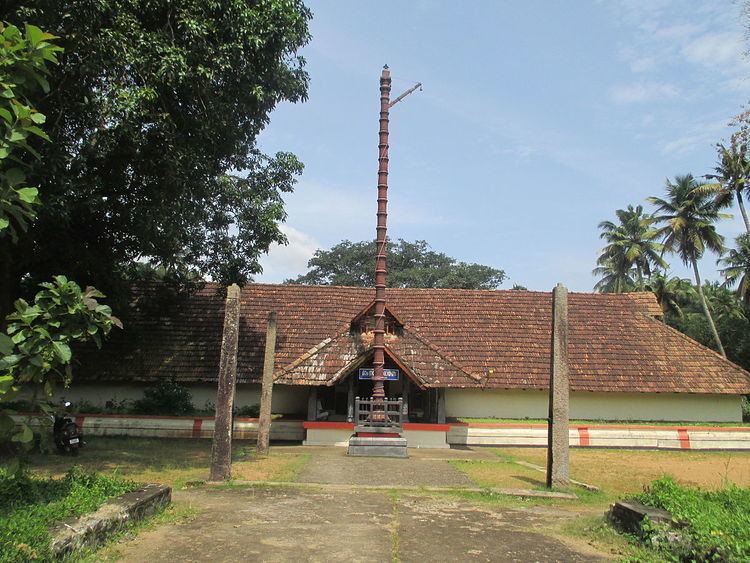District Alappuzha district | Poets Nammalvar Architectural style Dravidian architecture | |
 | ||
Similar Thiruvanvandoor Mahavishnu Temple, Puliyur Mahavishnu Temple, Thrikodithanam Mahavishnu Temple, ThiruVaragunamangai Perumal Temple, Thiruvellakkulam | ||
Sreenarayanapuram maha vishnu temple 2015
The Mahavishnu Temple, Thrichittatt, is a Hindu temple dedicated to Supreme God Vishnu and located in Chengannur, Alappuzha District, Kerala, South India. Constructed in the Kerala style of architecture, the temple is glorified in the Divya Prabandha, by Nammalwar, who lived 5000 years back. It is one of the 108 Divyadesam dedicated to Krishna, an avatar of Vishnu, who is worshipped as Imayavarappan. The nearest railway station to the temple is located in Chengannur, while the nearest airport is Trivandrum International Airport.
Contents
It is one of the five ancient shrines in the Chengannur area of Kerala, connected with the legend of Mahabharata, where the five Pandavas are believed to have built one temple each; Thrichittatt Maha Vishnu Temple by Yudhishthira, Puliyur Mahavishnu Temple by Bheema, Aranmula Parthasarathy Temple by Arjuna, Thiruvanvandoor Mahavishnu Temple by Nakula and Thrikodithanam Mahavishnu Temple by Sahadeva.
The temple is open from 4 am to 11:00 am and 5 pm to 8 pm and is administered by Travancore Devaswom Board of the Government of Kerala.
Legend
It is one of the five ancient shrines in the Chengannur area of Kerala, connected with the legend of Mahabharata. Legend has it that the Pandava princes, after crowning Parikshit as king of Hastinapura left on a pilgrimage. On arriving on the banks of river Pamba, each one is believed to have installed a tutelary image of Krishna; Thrichittatt Maha Vishnu Temple by Yudhishthira, Puliyur Mahavishnu Temple by Bheema, Aranmula Parthasarathy Temple by Arjuna, Thiruvanvandoor Mahavishnu Temple by Nakula and Thrikodithanam Mahavishnu Temple by Sahadeva.
During Mahabharata war, Yudhishthira, the head of the Pandavas, who never before uttered a lie, lied in one instant to defeat his Guru, Dronacharya. To overcome the sin of the lie, he underwent penace worshipping the lord here. Imayavar(Devas) came to this place prior to Yudhishthira and hence the deity here is referred as Imayavarappar.
History
Earliest references to this temple appear in the poems and hymns composed by the greatest of Alvar saints - Nammalvar, in circa 800 AD. Stone inscriptions in the temple date it back to the Second Chera Empire (800 - 1102 AD).
